Jen Black's Blog, page 43
April 2, 2018
Successful authors
Top selling authors on Kindle of all time:
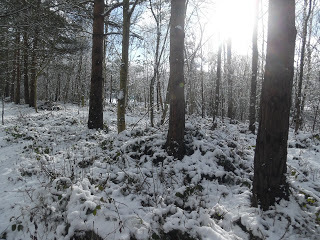
EL James
Lee Child
Stieg Larsson
Suzanne Collins
George RR Martin
Gillian Flynn
Diane Chamberlain
James Patterson
Peter James
Sylvia Day
I saw this on the internet this morning and forgot to copy the reference, but I had simply followed a link on sucessful authors and up it came. There was also a list of the cities in England that read the most and surprisingly London was not included. Nor was Newcastle, I have to admit!
There are two authors listedthat I have never heard of - Chamberlain and Day. We all know the infamous, possibly notorious, E L James and the other names I know though they may not be among my favourite authors. I could not hack my way through GAME OF THRONES, and Peter James is good but a little longwinded for me. I read him when I've nothing else handy! (Sorry Peter!) Stig Larsson could have done with a good edit, especially in the first half of the first book, but that is only my opinion and what do I know? I'm not even in the list!.
I've read all of Lee Child's bar ECHO BURNING and the MIDNIGHT LINE, which will be remedied shortly.What interests me might be the names that are not there - Rankin, Gregory, Gabaldon, Bolton and Nora Roberts to name one or two. Are their books not available in Kindle? I've never checked. If they are, I suspect they are as highly priced as the paperbacks. In the last month or two I have noticed Kindle versions that are priced higher than the paperback and those I'm never going to buy and I hope no one else does either. An author I enjoy is Peter May, another is Robert Goddard, I tried Julian Fellowes BELGRAVIA earlier this year but found the writing rather sketchy; perhaps he is more of a screenwriter than a novelist and there, he excels.
Since it is sleety-snowing here today I've added a grey snowy day picture!
Published on April 02, 2018 03:02
March 31, 2018
Rebus fan
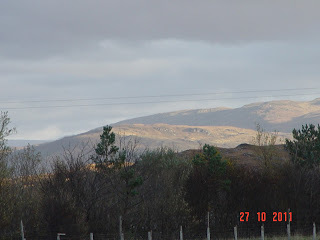 I'm a Rebus fan. Not an Ian Rankin fan, but a Rebus fan. Mostly that's because I see Kenn Stott and the actress who plays Siobhan Clarke as I read the pages. I always think she looks far too gentle to be a police detective, and she always surprises me. I found this piece on Ian Rankin's website and hope he won't mind if I put it on here as a sort of promo for him. It is a lovely reminder of how he started. It is also a wonderful description of the character, which is useful for me. I have a number of Rankin's books on my shelves. I even have some in paperback and one or two in Kindle. Duplication. Sigh. It shouldn't happen to an ex-librarian, should it?
I'm a Rebus fan. Not an Ian Rankin fan, but a Rebus fan. Mostly that's because I see Kenn Stott and the actress who plays Siobhan Clarke as I read the pages. I always think she looks far too gentle to be a police detective, and she always surprises me. I found this piece on Ian Rankin's website and hope he won't mind if I put it on here as a sort of promo for him. It is a lovely reminder of how he started. It is also a wonderful description of the character, which is useful for me. I have a number of Rankin's books on my shelves. I even have some in paperback and one or two in Kindle. Duplication. Sigh. It shouldn't happen to an ex-librarian, should it?Here's the excerpt:
It’s happened. An idea for a novel that started as one situation and has blossomed into a whole plot. I’ve not written any of it yet, but it’s all there in my head from page one to circa page 250’ (Ian writing in his diary 19th March 1985)
The character of Detective John Rebus – complete with estranged wife, young daughter and fragile sanity – seemed to spring fully formed from young English Literature graduate Ian Rankin as he sat in his bedsit in Arden Street, Edinburgh in March 1985. The book’s title Knots & Crosses came first, with the detective’s name coming out of that ‘picture puzzle’ of knotted rope and matchstick crosses of the title. Oxford had ‘Morse’ – a code, so Edinburgh would have ‘Rebus’ – a puzzle.
Knots & Crosses was not intended to grow into a series. In the first draft Rebus died at the end: but during the editing process Rankin decided to give him a reprieve. This was just as well, as when sales of standalone novels Watchman and Westwind were slow, his publisher suggested he revive the detective, who reappeared in Hide & Seek.
The word ‘curmudgeon’ could have been invented for Rebus. The flawed but humane detective we first meet in Knots & Crosses when he’s aged 40 is pretty much the character we see even in the most recent books when Rebus flirts with retirement before returning to the police force when the rules change. Rebus is a professional misanthrope made more cynical by the job he does. He delights in flouting authority; he smokes and drinks; he doesn’t play by the rules. He is the ultimate maverick cop who prefers ‘old-school’ graft to new-fangled modern-day policing methods. He’s a flawed, pessimistic, multi-layered character, a troubled, brooding soul and a cynical loner who can find no solace in faith, who’s obsessed with work, and happiest when propping up the bar of his favourite pub, The Oxford Bar, a glass of IPA in his hand.
The older Rebus has a bit more flesh on the bones – both literally and metaphorically; he is a little more disillusioned, and fighting a few more demons – and not quoting quite so much Walt Whitman or Dostoevsky.
The Rebus novels are written in real time, so Rebus ages along with each book. As the series progresses we learn more about him. Born in 1947, Rebus grew up in Cardenden, Fife, with his brother Michael, the sons of a stage hypnotist and grandsons of a Polish immigrant. Rebus left school at aged 15 to join the army whilst his brother followed in their father’s footsteps. Rebus served in Northern Ireland during The Troubles, before being selected for the SAS in 1971 where he excelled in training but he left the army shortly afterwards, which brought on a nervous breakdown. Following lobbying from the army, Rebus joined the Lothian and Borders Police in 1973. Rebus has been married, but divorced sometime in the 1980s. His ex-wife, Rhona, and his daughter, Samantha, appear frequently in the early novels.
We first meet Rebus in 1987 in Knots & Crosses when he is a Detective Sergeant working on the case of the Edinburgh Strangler, a serial killer who had been abducting and strangling young girls. He is based at the (fictional) Waverley Road police station where he receives anonymous letters containing knotted rope and matchstick crosses…
https://www.ianrankin.net/character/john-rebus/
Published on March 31, 2018 07:30
March 27, 2018
We're doomed
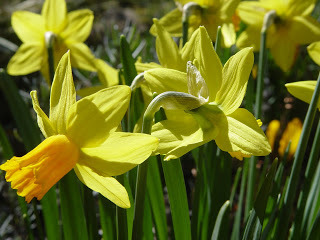 I read that there are novels branded as “up lit” by publishers. Upbeat novels of kindness and compassion are making their mark on bestseller lists. I hadn’t heard of them until today, but it seems they have been around for around two years or so.
I read that there are novels branded as “up lit” by publishers. Upbeat novels of kindness and compassion are making their mark on bestseller lists. I hadn’t heard of them until today, but it seems they have been around for around two years or so.Novels filled with tenderness, companionship and nostalgia are said by some to be nothing more than wish fulfilment: reading of the society people wish we had rather than the devastation, cruelty and hardship of the world we do have. Comfort reading in other words; possibly a match for comfort eating which may be a cause of so much obesity these days.
“Up lit” is maybe a way of trying to fix what is broken in our fragmenting society. When everything is dark readers have often turned to fiction as an escape. Once escapist fiction was crime, romance and science fiction; now it seems to be novels of kindness that infiltrate the bestseller lists because they offer hope. Maybe the "do-gooders" of the world hope some of the goodness will rub off on society in general, but I doubt it. Society in general doesn't read, it watches film and tv and the internet. What does it get there? Violence, much of it mindless, diversive interviews as channels vie for ratings and often, viciousness in social media.
"We're doomed, laddie," as the character in Dad's Army used to cry.
Published on March 27, 2018 01:46
March 17, 2018
Further thoughts on Kindle Create
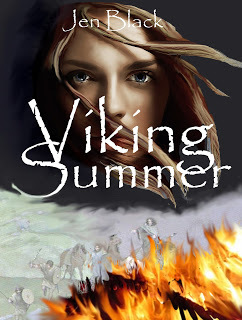 One of the things that worried me about Kindle Create was how it was actually published, because nowhere in the KC software was there any mention of book covers. I was wary of pressing the Publish button in case I did something that would screw up the whole project.
One of the things that worried me about Kindle Create was how it was actually published, because nowhere in the KC software was there any mention of book covers. I was wary of pressing the Publish button in case I did something that would screw up the whole project.After I read the cryptic sentence for the tenth time, a light bulb moment occurred: the software transfers the ms into a specific file that can then be loaded into the Kindle Direct Publishing package that I've used before.
Once I realised that it was easy, but I wish they had made it more clear!
Final checks to be made, price to be decided, blurb polished and keywords decided. Then I can final press the Publish button.
This is my cover. Depending how swiftly KDP works, publication day will be Sunday, or perhaps, if they're a little slow, Monday 19th March 2018.
Published on March 17, 2018 04:21
March 14, 2018
KINDLE CREATE
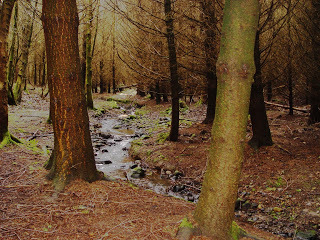 The new software from Amazon that allows publication of an e-book is called Kindle Create. I've been exploring it with a view to publishing my next book, which is due in a few days. I'd love to give an official date of publication, but sod's law says I won't stick to it, so I'll just say it is very close.
The new software from Amazon that allows publication of an e-book is called Kindle Create. I've been exploring it with a view to publishing my next book, which is due in a few days. I'd love to give an official date of publication, but sod's law says I won't stick to it, so I'll just say it is very close.At first glance the software seems beautfully simple, and in many ways, it is.
There is a choice of four themes to suit different genres - Classic, Amour, etc. They aren't exactly startling, but it means the software will modify the entire text for you to that style. It will seek out paragraphs, breaks, headings etc and deal with them for you, according to the style you've chosen. You can be certain they will all be consistent.
The software will do the Table of Contents for you, too.
If you have any links, the software will hold them but once you try to modify them they vanish.
My needs are simple as I have no illustrations, graphics or lists to incorporate. It is a plain novel, and the software seems to suit me well so far. One draw back I've noted is that though you can edit the text in Kindle Create, it - obviously when you think about it - doesn't make the change in your original Word document, so you could end up with no final copy of your ms.
If I had made all my editing changes on the Word document, I would have been further on by now. I had about three goes at editing on Kindle Create before the penny fnally dropped. Now I'm back to doing a final, final, final edit on Word, so in a sense I've wasted all the time I spent each time making the style changes. Next time I'll know better!
Published on March 14, 2018 03:06
March 8, 2018
Historical fact and historical fiction
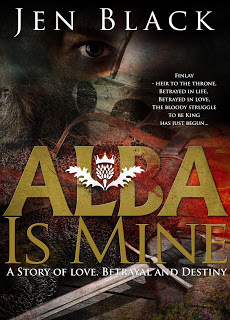 There are two or three very well-known authors I can think of (and many more whose names don’t spring to mind right now!) who write what I call historical biographies.
There are two or three very well-known authors I can think of (and many more whose names don’t spring to mind right now!) who write what I call historical biographies. They select a known person from history and write as if they werethem, or knew them; in other words, they write dialogue for them, tell us their thoughts, their emotions as well as the major points of their lives. This is fine, and I read a lot of them. But writing fiction about well-known and well documented figures and events is one thing; writing about characters who once existed about whom little is known is problematical.
Readers ask me if the main character in my book Alba is Mine is really MacBeth. Well, the answer is partly yes and partly no; MacBeth started it all. Or rather, Shakespeare did when he made him a short reign villain when in actual fact he reigned successfully for seventeen years.
I wanted to know more, but could regrettably find very little about the real MacBeth. Dunnett researched him for five years before she wrote King Hereafter and as a successful historical novelist she had access to all sorts of information sources that I, with nothing to my name, did not. So I contented myself with imagining a time period and its culture, clothes, poetry and weapons, added one or two historical characters and then leapt off into the realms of pure fiction, by which I mean I simply imagined everything.
Knowing how much was my imagination, I couldn’t bring myself to call my hero MacBeth, so I called him Finlay mac Ruaidhri, which wasn’t so far removed from the name most family trees gave his step-father. Dunnett’s conclusion was that MacBeth and Earl Thorfinn were one and the same person; Thorfinn was his Orkney name, and MacBeth his Christian name, but I made Thorfinn and Finlay half-brothers sharing the same mother. Since I was writing fiction I shamelessly telescoped events so that the book covers less than a year in the life of my hero – but it is a very eventful year!
Published on March 08, 2018 03:29
March 1, 2018
Early Dublin, Dubhlinn, Dyflinn
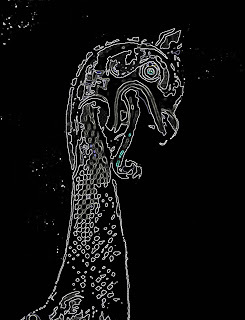 Dublin grew up over a 1,000 years ago at the lowest crossing point on the Liffey. The river was wide, shallow, endured high tides reaching far inland as well as flash flooding, and the river mouth was plagued with shifting sandbars. People began to settle on the east-west ridge south of the Liffey in two communities. First to establish itself was Ath Cliath, a trading settlement and then the partly ecclesiastical centre named Dubhlinn for the black pool above which it stood; both were certainly present before the early seventh century though no one can say for sure exactly when the settlements first appeared.
Dublin grew up over a 1,000 years ago at the lowest crossing point on the Liffey. The river was wide, shallow, endured high tides reaching far inland as well as flash flooding, and the river mouth was plagued with shifting sandbars. People began to settle on the east-west ridge south of the Liffey in two communities. First to establish itself was Ath Cliath, a trading settlement and then the partly ecclesiastical centre named Dubhlinn for the black pool above which it stood; both were certainly present before the early seventh century though no one can say for sure exactly when the settlements first appeared.The annals say the Vikings arrived in AD 841 and settled at Dubhlinn, and gave the name their own twist, rendering it as Dyflinn and one or two other variants which very much depended on the spelling powers of the recorder. They moved toward Ath Cliathby AD 900 possibly because the four major highways (defined as a road on which two chariots could pass one another) converged on the town, which would certainly have enhanced Viking trade. The name Ath Cliath means “a ford of hurdle-work,” so presumably it was also right on the crossing point. The river was said to be 300 metres wide at high tide with the ford only passable at low tide and then by a walkway constructed of slippery saplings woven into a mesh and fixed on piles of some kind.
The ninth century Viking longphort(a naval encampment) became a tenth century dunor castle. Across the River Poddle which sweeps around the base of Dyflinn, stood the assembly place called the Thingmot, anglicised as Thingmount, a flat-topped mound where Norse assemblies were held. Nearby are the burial mounds of the Scandinavian kings, known in Old Norse as haugr or haugar and believed to form the basis of the medieval name Hogges or Hoggen green. (I’m rather inclined to believe the name might have something to do with pigs, but what do I know?)
Three hundred metres to the north-east stands the Long Stone, which commemorates either the first landing place, or the re-taking of Dyflinn after one of the Hiberno-Norse battles, or both. One map shows the Long Stone on a small island but as a bridge was built, the quays were dug out, silting up of the river changed the shoreline; the Long Stone appeared to move inland. Amlaib or Olafr Cuaran, father of Sitric Silkenbeard, is given credit for colonising Dyflinn and building the defensive embankments along Wood Quay against the warring Irish. Sitric continued the expansion of the town.
Published on March 01, 2018 02:20
February 25, 2018
Psychic Distance.
 Dunvegan, SkyeI found a new writing term today. Psychic Distance. I discovered it in Emma Darwin's blog - This Itch of Writing. I've been been re-writing Dark Pool into VIKING SUMMER over the last couple of months, and since reading her blog I now know I've been playing around with psychic distance for one of my characters!
Dunvegan, SkyeI found a new writing term today. Psychic Distance. I discovered it in Emma Darwin's blog - This Itch of Writing. I've been been re-writing Dark Pool into VIKING SUMMER over the last couple of months, and since reading her blog I now know I've been playing around with psychic distance for one of my characters!I got to 25 in my first edit and decided my heroine wasn't coming through clearly enough. Things happened to her, but there was no sign of how she felt about it all. Big mistake! (The original story was written over twelve years ago when I hadn't been very long published!)
After thinking for a while I decided to concentrate on my heroine. After all, it was her story, and not Finlay of Alba's tale, though he was quite important. Making her my POV figure, using first person for her and third person for anyone else, would focus attention on her and get me closer to her. I sighed, because it meant a lot of work. I was working on chapter 25 when I made this decision, and then had to go back to the beginning and re-draft each of her scenes, but it certainly got me thinking as if I were in her shoes. Her sometimes snippety voice started coming through and I liked that. (Perhaps I have a snippety voice too?) As Ms Darwin's blog says
"The closer-in we are to that character's consciousness, the more the scene and how it's narrated is coloured and shaped by that character's personality."So the second draft concentrated on altering my heroines scenes. I also discovered something else I had to change. There was a dramatic incident, very important to the tale, and I had reported it from two character perspectives and thus reduced the impact of said incident. I decided the incident should be with my heroine; I incorporated some of the description of the second character's discovery into her scene, and omitted the rest. That made it much more her discovery and gave it more impact. Odd how these things leap out and demand to be changed. Technically then, I am on a third draft now and closing in rapidly on the magic words - the End.
Published on February 25, 2018 03:44
February 19, 2018
Sigtrygg II Silkbeard Olafsson
 Since I'm editing a book set in Dublin in 1035/6, I thought I should maybe offer some factual information for the reader who wants to know the history behind the book to be published soon as VIKING SUMMER.
Since I'm editing a book set in Dublin in 1035/6, I thought I should maybe offer some factual information for the reader who wants to know the history behind the book to be published soon as VIKING SUMMER.Sigtrygg II Silkbeard Olafsson actually existed. He glories in having several spellings of his name depending which source you read; he can be Sihtric, Sitric and Sitrick in Irish texts; or Sigtryg and Sigtryggr in Scandinavian texts. There were two Sitrics before him in the family tree and one of his sons was also named Sitric, so reading histories of the time can be confusing. As the Hiberno-Norse king of Dublin of the Uí Ímair dynasty, his dates are complicated too. He ruled - and these dates are the best I can glean from the different reports - AD 989–994, then again AD 995–1000; and restored once more in AD 1000 and abdicated 1036. Adding all that time together, he ruled for 46 years, which was no mean feat at the time.
He conducted a long series of raids into territories such as Meath, Wicklow, Ulster, and perhaps even the coast of Wales. He also came into conflict with rival Norse kings, especially in Cork and Waterford.
He went on pilgrimage to Rome in 1028 and is associated with the foundation of Christ Church Cathedral in Dublin and would have called himself a Christian, but that didn't stop him executing and blinding his enemies.
His father was Olaf Cuaran, King of York and his mother the infamous Gormflaith ingen Murchada of Munster. They married in AD 972, and Sigtrygg was born around AD 974. He married Emer, daughter of Brian Boru, when he was 24 and forced her to watch the Battle of Clontarf with him from his fortress. It was the battle in which her father Boru died. They had 5 sons, who all died before Sigtrygg. He seems to have been related to almost every famous family of the time - his sister Gyda married Olaf Tryggvasson, who died in 1000. Their son was killed by Canute's son, Sveinn in 1033 in Norway. Sigtrygg's son Olaf married Slaine, daughter of Boru - though some reports have Slaine as Sigtrygg's wife.
With English blood from his paternal grandmother, Eadgth, Alfred's grandaughter; Irish blood from Murchadh, King of Leinster, his maternal grandfather, the mix was complete with his Norse bloodline reaching back to his great great grandfather Ivarr the Boneless. He abdicated in 1036, and died in 1042
Marriages were repudiated seemingly at will, and Gormflaith, in spite of her famed beauty, was repudiated twice. Not only did Sigtrygg marry Boru's daughter, but Brian's third wife was none other than Gormflaith. It is rumoured that Brian had four wives and thirty concubines and though Gormflaith gave him a son, it is doubtful that she was ever truly married to him.
Interesting scraps of information I found was that in the year 1000 AD, the temperature was 2-4 degrees higher than now. Population was so much less than now: in 1066 England had a population of 2-3 million, Ireland just under 1 million and Scotland and Wales a little over half a million.
Published on February 19, 2018 03:48
February 14, 2018
VIKING SUMMER
 First edit done, second under way and I'm thinking about a cover. Here's a snippet from what I think will now be called VIKING SUMMER. The story begins on the west coast of Scotland in 1036 AD and Eilidh's brother Domnall has just been caught stealing cattle. Finlay, as the newly crowned King of Alba (read ALBA IS MINE) and his good friend Hareth, confront him. They are part of the story, but the main protagonist in this story is Eilidh and her adventures.
First edit done, second under way and I'm thinking about a cover. Here's a snippet from what I think will now be called VIKING SUMMER. The story begins on the west coast of Scotland in 1036 AD and Eilidh's brother Domnall has just been caught stealing cattle. Finlay, as the newly crowned King of Alba (read ALBA IS MINE) and his good friend Hareth, confront him. They are part of the story, but the main protagonist in this story is Eilidh and her adventures."Four days later I stood in the hearth-hall with anxiety churning my stomach as my brother's familiar figure strode towards me. Unshaven, muddy and with his pale brown curls like a nimbus around his sunburned face, he frowned as he noted Bundalloch men loitering around the hall when they should have been at work in the fields and barns. His gaze came to me, questioning; then he saw the strangers beside me. His stride slowed and his frown deepened.
My hands gripped together beneath my breastbone. The King of Alba stood silent at my side. His unexpected arrival had brought women running into the dairy to tell me of the huge Viking longship approaching the jetty. I had stared at the tall, attractive man stalking ashore as if he owned Bundalloch. When I saw the gold circlet of kingship at his brow, I realised he did indeed own it and knew we were in trouble.
His dark good looks, self-confidence and the size of his entourage initially unnerved me, but pride came to my rescue. My gown might be plain, my apron spattered with milk and my hair unadorned, but until Domnall married, I was the lady of Bundalloch and knew my duties. Hurrying forward, I greeted the king and stuttered a welcome. He had smiled, dispersed his men around Bundalloch, and walked into the hearth-hall without having received an invitation from me.
Beside me the King of Alba dropped into the thane of Bundalloch's chair and made himself comfortable. The storm cloud gathered on Domnall’s face as Leod and their companions filtered into place behind him. Then, collecting himself, he took a quick breath, bent his head and forced out a sentence of stilted politeness. “I trust my sister has offered food and drink, Your Grace?”My nails dug into my palms. Of course I had. Did he think I was stupid?
“We heard you’ve been away on business,” the king said in a surprisingly deep voice. “To do with cattle, I think?”Stiff as a pine, his fists clenched hard against his thighs, my brother said, “The beasts wander too far and must be brought back.”
A flood of sunlight lit the hall as the doors burst open to admit a vibrant young man with chestnut hair who strode across the rough earthen floor. “You've been raiding, Domnall,” he called out in a cheerful voice. “We've seen the beasts and watched you at work.”
Published on February 14, 2018 03:37
Jen Black's Blog
- Jen Black's profile
- 6 followers
Jen Black isn't a Goodreads Author
(yet),
but they
do have a blog,
so here are some recent posts imported from
their feed.



